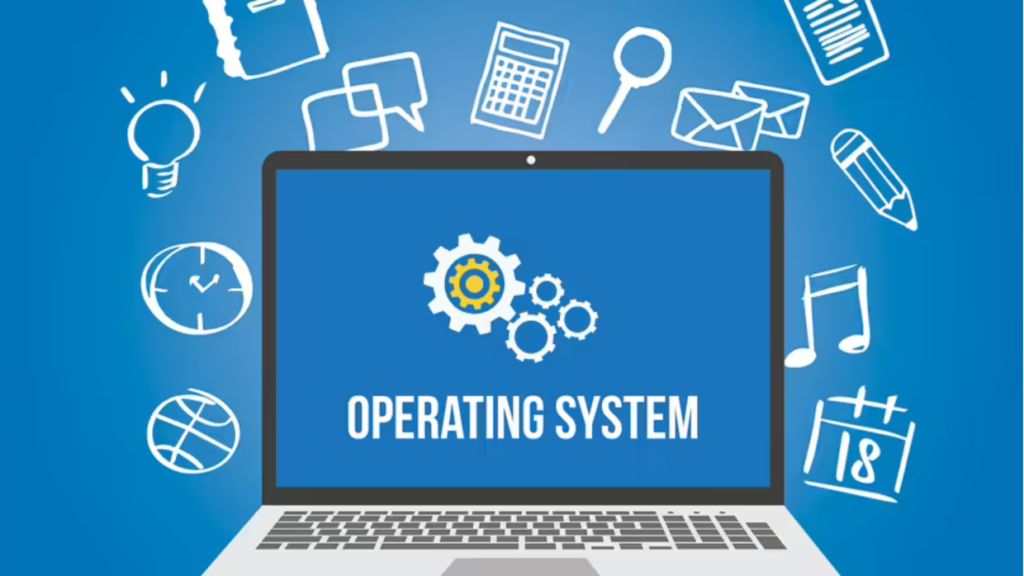When you turn on your computer, the first thing that pops up is the operating system (OS). Whether you’re using Windows, MacOS, or even Linux, the operating system is the software that manages everything on your computer. But what exactly is it, and why is it so important?
In this blog post, we’ll explain what an operating system is, why it matters, and how it works behind the scenes to make your computer functional.
1. What Is an Operating System?

An operating system is the software that acts as the bridge between you (the user) and the computer’s hardware. It manages hardware resources like the CPU (central processing unit), memory, storage, and input/output devices (such as keyboards, mice, printers, etc.). Without an operating system, your computer would not be able to run any software or perform any tasks.
2. The Role of the Operating System
The OS performs several crucial tasks, including:
- Managing hardware: It controls the communication between the hardware (like the hard drive, RAM, and processor) and the software. For example, it helps your CPU understand instructions from programs and allocate memory accordingly.
- Running applications: The OS ensures that software programs run smoothly and that they have access to the resources they need. If you open a web browser, the OS helps manage its operations.
- Providing a user interface (UI): The OS offers a way for users to interact with the computer. On Windows, this is through the Start Menu, taskbar, and windows. On MacOS, it’s through the Dock, menu bar, and Finder.
- Managing files and storage: The OS handles file organization, storage, and retrieval. It lets you save documents, photos, and videos in folders and ensures that the data is safely stored.
- Security and protection: The OS ensures your computer is secure by managing user accounts, passwords, and permissions, preventing unauthorized access.
3. Types of Operating Systems

There are several types of operating systems, each designed for specific uses:
- Desktop OS: These are the most common OS types used by individuals on their personal computers. Popular examples include:
- Windows: A versatile and widely used OS that powers most personal computers.
- MacOS: Apple’s operating system for Macs, known for its sleek design and reliability.
- Linux: An open-source OS known for its flexibility and security, used by developers and tech enthusiasts.
- Mobile OS: These OSs are used in smartphones and tablets. Examples include:
- iOS: Apple’s operating system for iPhones and iPads.
- Android: An open-source OS used in most smartphones and tablets.
- Server OS: These are used in servers and data centers to manage large-scale computing tasks. Examples include:
- Windows Server: A version of Windows tailored for servers.
- Linux (various distributions): Linux is also widely used in server environments.
- Embedded OS: These are specialized OSs used in devices like smart TVs, routers, and medical equipment. They are designed for specific functions and often have limited user interaction.
4. How Does an Operating System Work?
At its core, an operating system works by abstracting complex tasks into simpler operations that users and applications can interact with easily. Here’s a simplified view of how it operates:
- Booting Up: When you turn on your computer, the OS is the first thing that loads. It checks the hardware and initializes the system to make it ready for use.
- Managing Resources: The OS decides how much CPU time, memory, and other resources each program should get. It ensures that programs don’t conflict with each other or crash the system.
- User Interface: Once the OS is running, it presents the user interface (UI), which lets you interact with your computer. You can open apps, browse files, and make settings changes through the UI.
- Running Programs: When you open a program (like a browser or a game), the OS handles launching the application, managing its resources, and closing it when you’re done.
- Shutting Down: When you turn off your computer, the OS closes all running programs and safely shuts down the hardware to prevent data loss.
5. Why is an Operating System Important?
Without an operating system, your computer would be a lifeless machine. The OS acts as the intermediary that lets all of the computer’s hardware and software communicate with each other. It makes it possible for you to run applications, access the internet, manage your files, and do everything you enjoy on your computer.
Conclusion:
In simple terms, the operating system is the heart of any computer. It makes everything run smoothly, from managing hardware resources to giving you a way to interact with the system. Whether you’re using a Windows laptop, a MacBook, or a smartphone, the OS is what makes your device functional.
So, the next time you boot up your computer, remember—everything you do relies on the operating system working behind the scenes!
